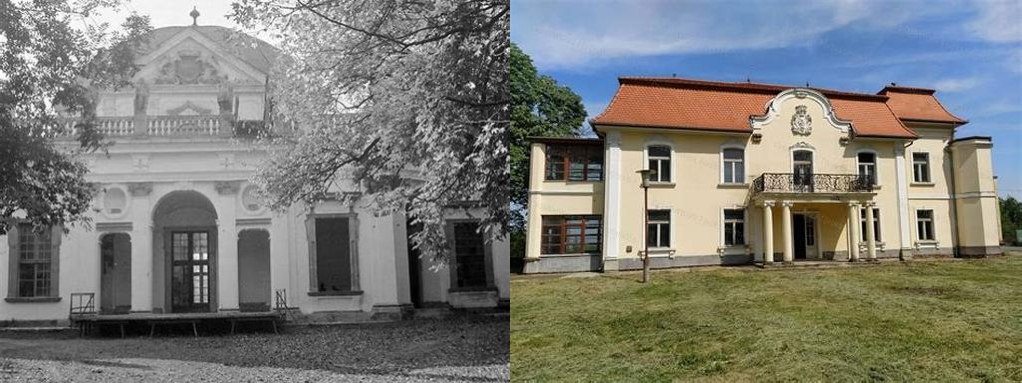
Posztóczky-kúria in the peaceful village of Környe is not the sort of place you’ll stumble across by accident, but that’s precisely what makes it so special. Tucked away in the gentle rolling landscape of northwestern Hungary, the mansion offers a window into centuries of noble family life, rural modernity, and the quiet rhythm of small-town history. Here, the whispers of the past linger in the lime-shaded park, on the old stone steps, and in the very air. If you have even the slightest penchant for time travel—mental or emotional—this manor will draw you in.
Let’s start with the family whose name the mansion bears: the Posztóczky family. They weren’t the grandest of Hungary’s aristocracy, but their story is a mosaic of what made so many landed families central to the nation’s rural fabric. Generations of Posztóczkys left their mark here, adapting the house to changing tastes and eras. Built around 1820 in the late classical style—classicism touched with slight baroque flourishes—the mansion was the hub of local social life, an axis around which Környe’s fortunes seemed to turn. It’s easy to imagine carriages pulling up under the spreading branches of the estate’s stately trees, women in sweeping dresses descending the steps, and laughter drifting from the ballroom during holiday celebrations.
Time, though, is both gentle and relentless. The Posztóczky family home inevitably mirrors the broader Hungarian tale: riches become relative, historical winds shift, and the world outside grows noisy. During the 20th century, the estate passed through some turbulent periods. The Second World War reached into Környe’s quiet, disrupting families and sending a shockwave through homes like this one. Afterward, like so many gentile mansions across Hungary, the building faced nationalization: private luxury made public, then repurposed or, sometimes, abandoned.
Yet the Posztóczky-kúria has endured with remarkable dignity. Today, visitors can see firsthand how changing times have left their trace, both inside and out. Architecturally, the building is a subtle masterpiece—its clear, symmetrical facade interrupted only by graceful pilasters, classical moldings, and the charming detail of window shutters aging gracefully. The roof sweeps low, typical of the period, and if you look carefully, you may spot carvings or initials long worn by rain and sun. The old cellars, once filled with the bounty of surrounding vineyards, now seem almost to hum with the stories of old harvest feasts.
One of the most compelling reasons to spend an afternoon here is the park itself. Strolling under the serene gaze of venerable oaks, birches, and chestnut trees, you’ll find yourself thinking not only of centuries past, but also of the simple joys of today—birdsong, filtered sunlight, the crunch of gravel paths. In spring, wildflowers scatter color across the lawns like paint. Even in winter, a bracing walk around the estate has its charms, cloaked in quiet and a low, northern light.
Local accounts say the Posztóczky family were deeply integrated into Környe’s everyday life. The grand hall once hosted charity balls, and the family sponsored schools and festivals, helping foster the village’s enduring sense of community. This isn’t a place defined only by its four walls and a roof, but by the web of relationships nurtured within and beyond them. For curious visitors, stories like these make a walk through the house’s high-ceilinged rooms and echoing corridors all the more evocative.
Importantly, the mansion is a living presence in the village—not just a museum frozen in time, but a space that still hosts exhibitions and community events. It’s possible to attend art shows or concerts beneath its vaults, and there’s a quiet satisfaction in knowing that the laughter and music echoing today are not very different from those heard here two centuries ago.
So, what do you get when you visit the Posztóczky-kúria? Not a palace or a place of grandiose spectacle, but something richer and perhaps rarer—a sense of time flowing gently, the pulse of history felt in the small, persistent details. The house is neither pristine nor decaying; it is, above all, alive. And in Környe, off the main tourist routes, that kind of authenticity feels like a privilege to experience.





